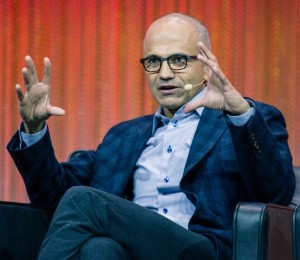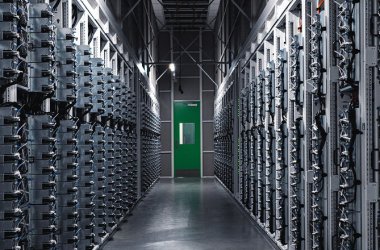 Congratulations on your new job, Satya Nadella. Now meet all of your new problems.
Congratulations on your new job, Satya Nadella. Now meet all of your new problems.
Windows 8, Windows Phone 8 and the Surface tablet were supposed to catapult Microsoft into a competitive position in the tablet and smartphone markets, but they’re all still works in progress. The company still trails Apple, Samsung and Google in the mobile arena, while the importance of the PC erodes.
Yes, Windows 8.1 was better than Windows 8, but it came with its own set of bugs, including some very disruptive ones. Now, rumours are that Microsoft may fall on its sword and demote its controversial “Modern” tile-based interface in the next release of the OS, opting to make the OS boot by default to the traditional desktop interface.
The second generation of the Surface has been better received, but Microsoft executives acknowledge the product needs to be further improved and that sales need to increase, especially given that the company is still losing money with the product.
Then there are the legions of iPad and Android tablet users who are still waiting for Microsoft to release a native version of Office for their devices, while rivals offer alternatives. If Microsoft waits too long, the market opportunity and demand may shrink significantly, costing the company precious potential revenue.
The $7.2 billion acquisition of Nokia’s smartphone business should close soon, and that will require massive culture, business and technology integration. Meanwhile, skepticism over the deal grows as Nokia delivers mediocre financial results and Lumia smartphones running Windows Phone OS struggle in the market.
Google Apps continues to be a thorn in the side of Office and Exchange, as it has for many years, even though Microsoft has put itself in a much better position in the cloud email and collaboration market since it released Office 365 in 2011.
Nadella successfully led the formerly named Server & Tools division for the past three years, steering its transition to cloud computing with products like the Azure platform, and prior to that he held high-ranking positions in the online group and in the Office division. But now he’ll have a lot more on his plate, and he’s never been a CEO.
Microsoft is that rare technology company whose product line is so diverse and heterogeneous that it ranges from consumer products like the Bing search engine and the Xbox gaming console to enterprise software like SQL Server, SharePoint, Dynamics CRM and the Azure cloud platform. To make matters more complex, some products, like Office and Windows, are used both by consumers and businesses.
Nadella will also have to oversee the completion of the ambitious and broad reorganisation Ballmer unveiled in July, called One Microsoft, designed to make the company function more cohesively.
Last but certainly not least, while he deals with these issues and with numerous others that cross his desk as CEO, Nadella will be expected to be a tech visionary, much more so than Ballmer was, and anticipate hot market opportunities. Among those Microsoft missed under Ballmer’s watch, which started in 2000: the rise of smartphones and tablets, Web search and social networking.
Forrester Research analyst David Johnson said Nadella is likely less worried about “what” will get built and more worried about “how” the company decides what those things will be, and how it develops them into market leaders.
“He will need to restart the innovation engine that can put Microsoft back on the leading edge in personal computing,” he said. “Ballmer was about execution. Nadella will need to be about innovation and that means turning the company’s eyes and ears to the world outside to build things that astonish customers with their excellence and usefulness.”
In a letter to Microsoft employees, Nadella acknowledged the importance of vision and innovation, or as he put it: “clarity of purpose and sense of mission that will lead us to imagine the impossible and deliver it.”
“While we have seen great success, we are hungry to do more,” he wrote. “Our industry does not respect tradition – it only respects innovation. This is a critical time for the industry and for Microsoft. Make no mistake, we are headed for greater places – as technology evolves and we evolve with and ahead of it. Our job is to ensure that Microsoft thrives in a mobile and cloud-first world.”
Johnson and other industry analysts are generally positive about Nadella’s chances of doing a good job as CEO.
They view Nadella as a strong technologist whose clear understanding of cloud computing has allowed him to lead a successful transition of the company’s backend server software and system tools group so that Microsoft can offer enterprises multiple deployment options – on premises, hosted on private clouds or provided via a public cloud.
He is also seen as someone who, after more than 20 years at Microsoft, understands the company’s culture and has a deep insider’s view of what is working and what needs to change.
“I see a proven leader who knows Microsoft from the inside, which means he’s in a good place to know what needs fixing,” Johnson said. “It’s clear he knows what innovation looks like and he’s proven he can be a tireless student of the market and create successful product strategies in a disruptive market, as he has with Windows Server and Azure.”
Microsoft had been looking for a new CEO since Ballmer declared his intention to retire in August. The surprise announcement triggered a series of rumours over who would be picked, including most notably outsiders like Ford CEO Alan Mulally, considered a front-runner for months.
That Microsoft chose an insider shows that the pool of external qualified candidates with the necessary business and technology experience, knowledge and skills was small, according to IDC analyst Al Gillen.
“If Microsoft was going to pick an insider, Nadella is the best choice. He understands how to deliver cloud services and how the industry is changing” Gillen said. “They made the right decision. I think he’ll make a very good CEO.”
Of course, Nadella doesn’t have experience as a CEO, let alone running a company as large as Microsoft, so there will be a learning curve for him there, Gillen said.
Microsoft also announced that co-founder Bill Gates will step down as chairman of the board and take on a new role as technology advisor. In this new role, he’ll supposedly be more involved with the company than he has been in recent years, when he has been mostly devoted to his philanthropic work.
John Thompson, the board member who led the CEO search committee, will take over as chairman.
During the search process, there were reports that some candidates soured on the prospective job because of concerns that Gates and Ballmer would still have too much influence over the company.
Although it’s hard to tell what Gates will end up doing in this new role, he could be a great asset and assist Nadella as he learns the CEO ropes, Gillen said. Nadella is adding new and bigger responsibilities to his plate, including overseeing sales, marketing and internal and external investments. “He’s got a much bigger job now,” Gillen said.
Nadella has vision and passion, drives his decision-making process with concrete data and knows how to surround himself with strong leaders, Forrester Research analyst James Staten said.
“He was brought to [Server and Tools] to teach them the agile online model,” Staten said. “This meant getting their software off the linear waterfall development method, to the agile, continuous delivery method used by the online group and to transition their apps over to [cloud computing].”
Nadella met with some serious resistance at first from division managers, but he prevailed, according to Staten. “Satya refused to back down or compromise on the shift to the cloud and a lot of those managers who refused to get on board aren’t there anymore,” he said.
“He can be stubborn, very strong willed,” Staten said.





